Inside sales are an ever-changing field. Sure, inside sales are changing faster today than a century ago, but even back then, it was a dynamic industry.
If you haven’t heard of “inside sales” yet, don’t worry. You’re not alone. This article will explore inside sales and discuss how to make the most of it within your business.
What Is Inside Sales?
In a nutshell, inside sales is done by phone, email, or online portal (like using live chat on your website).
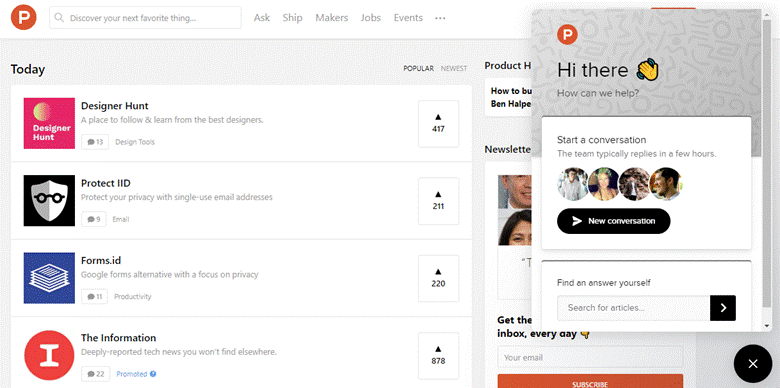
Live chat on the website for inside sales
It’s becoming a trend as in-person meetings become increasingly unfeasible. Outside sales through face-to-face meetings are still viable if you’re targeting local businesses. However, inside sales are the way to go when you want to expand your horizons.
Even locally, though, inside sales have advantages, which is covered in the next few sections.
You might also have heard the terms “virtual sales”, “sales in the cloud,” or a variation thereof. These refer to the same notion: inside sales.
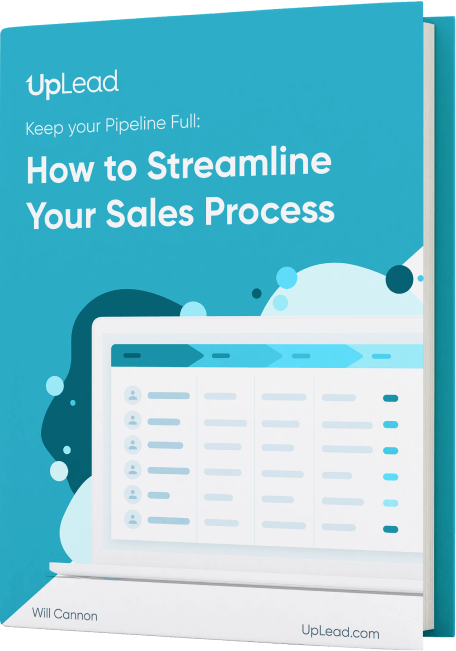
Inside Sales vs. Outside Sales
Outside sales are sales in the traditional sense – with field reps heading out and meeting clients. While it has some clear advantages over inside sales, there are also disadvantages to relying on the traditional approach.
Here are the advantages and disadvantages of inside and outside sales:
The Advantages of Outside Sales
The most significant advantage of outside sales is the “human” factor. With outside sales, you can sell directly without being cut off or ignored. Emails won’t land in the spam bin or be missed entirely.
Another advantage is being out on the road and spotting businesses that may not have any online presence or technological savvy. An otherwise oblivious company may desperately need your services, which would easily be overlooked by an inside sales professional.
The Advantages of Inside Sales
Inside sales have advantages over outside sales, like a wider market reach. With inside sales, clients can be drawn in from all over the place, from the comfort of your own office in LA. Your outside sales reps would probably need to leave your state or even the country for the same marketing opportunities in outside sales.
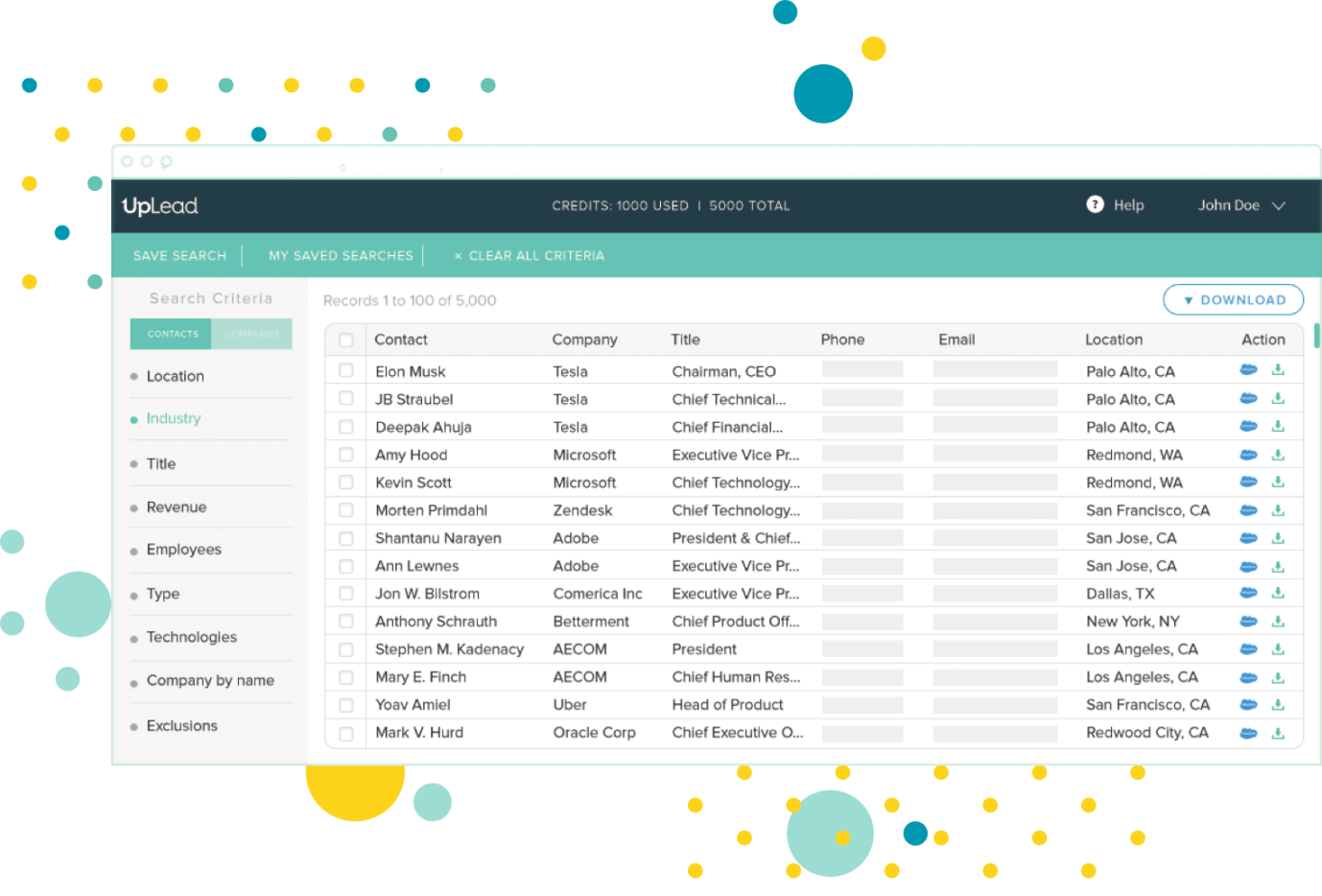
UpLead easily provides a huge lead database you can use
Another advantage of inside sales over outside sales is fuel savings, which counteracts other costs in inside sales. High costs are involved if you’re getting leads via paid advertising or similar channels. It’s safe to use these as “virtual fuel,” – meaning how you spread your message via inside sales.
A final advantage is shooting off thirty emails per hour, essentially selling to all thirty clients in a single hour. On the other hand, a traditional sales rep may spend at least half an hour per client, probably more. That’s without taking into account the driving time.
Choosing Between Inside vs. Outside Sales
All considered, switching from outside sales to inside sales is a no-brainer. In a perfect world, we’d probably have a combination of inside and outside sales.
As with most marketing, a cost-profit analysis should be conducted. You’ll soon discover the best balance for your own company.
Inside sales vs. outside sales salary
Although inside sales are growing far faster than outside sales, outside sales reps still make about 30% more on average than an inside sales rep.
This is likely because the inside sales model allows for a simpler, more repetitive sales cycle and can even be achieved by selling remotely.
The Blurring Lines
In modern sales offices, the lines between inside and outside sales are blurring. Field sales reps spend more time behind their computers and less on the road.
It’s safe to assume that in the near future, sales reps will need to be well-versed in both inside and outside sales techniques.
The Inside Sales Process
The inside sales processes vary greatly, and there’s no right or wrong way to do it.
For example, you may offer an affordable subscription service in your inside sales. The process will likely start and finish without your client and your sales team ever meeting in person. On the other hand, you might have a more expensive or complicated product, where a demo or presentation by sales reps would be necessary for closing the sale.
This muddles the distinction between inside and outside sales a little, but there’s a clear difference. Sales that start as inside sales usually stay inside, and vice versa for outside sales.
If your prospect was attained and nurtured via email, phone, or website, they’d stay an inside sale regardless of an in-person presentation or demo. If they were attained in the field, they’re an outside sale.
Let’s take a look at the process in its most basic form.
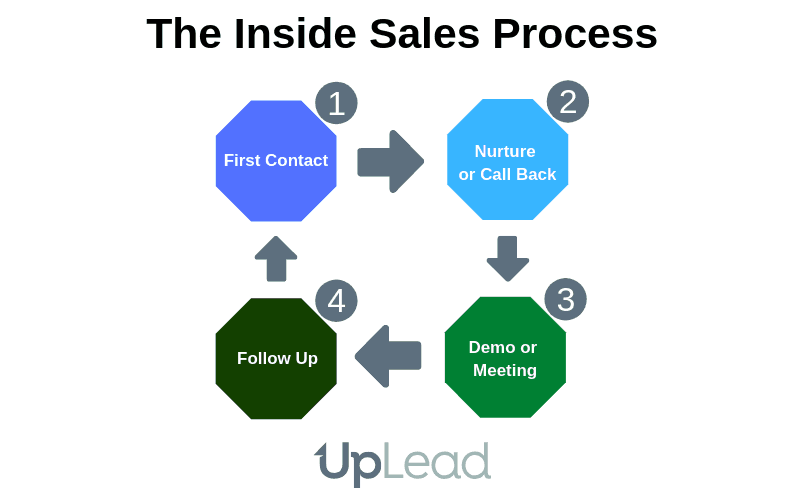
1. First Contact
This is where a lead enters the inside sales pipeline. Your sales team either calls them, drops them an email or sees them sign up on your website.
If they respond to the first contact from your sales team, they’re in your pipeline. From there, they’ll either make a purchase (for an easily sold, affordable service) or enter your pipeline if qualified and interested.
2. Nurture / Call Back
This stage is optional, but it’s where they’ll enter your automated email flow or be called back by a qualified sales rep.
During this phase, you’ll gently lead the prospect into making a decision to buy.
3. Demo / Presentation / In-Person Meeting
Here’s where inside sales reps will be showcasing your product. These leads are genuinely interested and likely had a few conversations with your sales teams. From this point, there is expected to be a fairly consistent conversion ratio.
4. Follow Up
This entirely optional phase helps mop up a few leads that have gone awry. Arguably, the best method for this step is an email. Thank them for the meeting and restate the benefits of your product or service.
Timing is important here, too. If your inside sales rep contacts them too soon, they’ll come across as desperate. Too late might lose you the sale entirely.
Testing the waters in your niche is best. Your sales team should experiment with their unique field of customers and find the best time for an inside sales rep to contact them.
Endless Variations
Depending on your business, the inside sales process could look wildly different. It’s similar, however, to any outside sales process you have in place.
You might only have to follow step 1, or you may experience a trial period in between, and so on.
What’s important in inside sales is to grasp the basics, using them to craft the ideal inside sales process for your unique business offering.
Inside Sales Techniques and Strategies
There are a vast number of sales techniques and strategies that apply to inside sales. Let’s explore some aspects of inside sales and see how you can apply them.
Step 1: Lead Generation
The most well-oiled sales pipeline in the world can’t convert prospects into buyers without leads through the front end. Strong lead generation is vital to any inside and outside sales strategy, but which strategies and techniques are best?
Cold Calling / Emails
Another way to generate leads is to scour the internet, phone books, and businesses who may be looking for your solution.
It may not be the most efficient use of your time to search for leads manually, yet it is often an effective lead generation method to send out cold emails. (There’s a shortcut to building targeted B2B contact lists. Learn more about it here.)
Traffic Generation (e.g., PPC)
Facebook and Google ads remain viable ways for your inside sales reps to draw quality traffic (and, as a result, leads) through the front of your pipeline and for marketers across industries ranging from real estate to SaaS. Check out how real estate marketers use social media ads to generate leads here.
In B2B inside sales, you can also use LinkedIn’s paid ads, but a far more effective way could be dropping “cold” messages to pre-qualified leads. This does require some know-how, so be sure your lead-gen team is confident in this area.
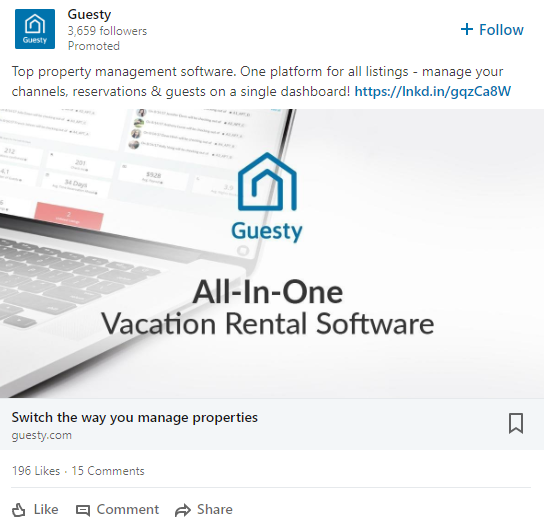
LinkedIn Ad
We’ll talk more about building a qualified team in the next section.
The Lead Magnet
This role is often combined with paid advertising. Having a free course, a book or free consultation in the front of your funnel can drag more leads through the virtual door.

Lead magnet on the UpLead blog
Building a valuable lead magnet is important for your inside sales model to succeed. Any lackluster attempts at providing value could hurt your inside sales more than help them. The company’s image may suffer badly under low-quality lead magnets.
Make sure you’re providing your prospects with real value.
Remember to capture those emails in this inside sales step for the nurturing phase of your sales campaign. You can also collect customer data to inform inside and outside sales teams and perfect your sales cycle.
Step 2: Nurture Those Leads
The next phase in your inside sales strategy is to nurture leads. They’ll quickly forget about you if you don’t establish contact soon after an initial call, email, or sign-up. Your competitors will solve the problem you could solve for them.
There are many ways to nurture leads in this step of inside sales – callbacks, emails, direct mail, and more.
It all depends on the market your sales teams have. Callbacks are more aggressive, for example, and your inside sales professionals risk annoying your lead. You bring in that human factor – an actual conversation between your leads and your inside sales reps.
Emails
This allows your leads to hear your message in their own time. There’s less pressure, which isn’t great for pressing the sale, but urgency can be added if your email is opened.
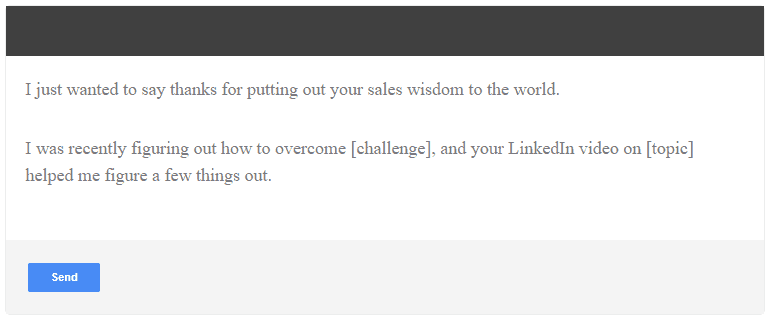
Perhaps, consider a special offer or a trial with an expiry date. Good direct response copy in your emails will convert these leads quickly to sales.
The most important thing to remember is to get the tone and pitch right in your emails. Tons of testing has found that no matter the industry, people like to feel like they’re part of a human conversation. A light, personal tone is often best.
Direct Response Mail
Old-school communication seldom fails, especially when it is first used. Back then, you always got sales letters in the mail, so the novelty wore off quickly. In the digital age, however, sales letters are coming back.
Getting a sales letter in the post these days is almost a novelty. At the very least, they will glance over it.
The problem is sales letters are not so easy to track. You’re never sure how many responses are from the letters. An easy way to combat this is to add a coupon or reference to the letter.
Step 3: Demo / Presentation
Your demo or presentation should be well-versed at this point in the inside sales process. You could even craft a self-serve demo using an interactive demo software like Tourial or Walnut. This topic could fill an article on its own, but since this is a large part of inside and outside sales, we’ll leave it there.
Step 4: Follow Up
Follow-up could be especially useful for your inside sales reps to track the delivery of direct mail efforts.
It’s also necessary after the demo phase since some leads will have forgotten to call your sales teams. We all lead busy lives.
Make sure you have some follow-up in place for this step of your inside sales process.
Again, it’s more or less the same as step 2. Your inside sales reps can call, email, or send a direct mail to your prospect to make sure you haven’t just slipped their mind.
How to Build an Inside Sales Team
When possible, it’s best to have specialists in each field. Multi-skilled inside sales reps, however, are worth their weight in gold. Depending on the skill level and trainability of your staff, you could build a core team that specializes in one or more of the following departments:
Lead Generation Unit
Having specialized sales teams to rake in the leads is an excellent idea, but not always possible in smaller companies.
Within this team, you’ll want one or two inside sales reps to master each of the following skills:
Cold Calling
Inside sales reps need to know how to speak to prospects. They need to pique interest, get the first meeting, and can easily be trained to handle calls and emails.
Cold Emailing
Your inside sales reps must know how to spark interest when cold emailing prospects. They use the language of the prospect and how to use words to form a real connection with leads. (Of course, conversational English is key. If your reps are struggling, feel free to provide them with suitable courses to boost their results.)
Effective cold emails mean leads can be turned into sales faster.
The PPC Guru
These inside sales reps know all about paid advertising and cold outreach using tools like Google Ads, LinkedIn, Facebook, and the like.
You can have a specialist in each social media sphere, but that’s often not economical. Having a general social media expert is good enough for most of us. Read this guide on how to choose a PPC agency (or freelancer).
Researcher
These specialists will know how to dig out leads from places most others wouldn’t even consider. They know how to study leads, so they can present the information to the inside sales professionals.
They’ll be proficient at using search engines and could probably teach you to use Google in ways you never imagined.
The Sales Team
After you’ve generated a ton of leads, you’ll want a team filled with inside sales professionals who know how to close them.
A general-purpose copywriter would be best in the inside sales department of smaller companies. Again, using a few multi-skilled specialists is ideal.
The Nurture Expert
These inside sales reps have the gift of the gab without boring the lead. They understand that consistently adding value to your inside sales customers is how you set up for the close.
The Closer
The closer is an expert in sealing the deal. They close the sale on the back end of the funnel. They’ve seen the rest of the copy and possess the exact words to turn a lead into a sale finally.
These inside sales reps know about adding urgency, too, stressing pain points and re-emphasizing benefits.
The Charmer
These guys know how to wrap just about anybody around their little finger. They are there for the in-person meetings of both inside and outside sales.
They’ll be there during the sales process, conducting demos and meetings where the copywriters need a skilled salesman at hand.
Support Staff
The support staff cannot be forgotten in the spirit of being thorough.
Inside sales reps can’t work with a broken computer, and few inside sales reps can survive an entire day without coffee.
The staff behind the scenes deserve recognition, too, since they’re as much a part of the team as anybody else.
11 Inside Sales Solutions That’ll Make Your Team More Productive
A good craftsman never blames his tools, but in a world of inside sales, there are tools to make your life much easier.
There are thousands of different software choices, some better than others. Here are a few tools to complement different spheres of inside sales:
Lead Generation Tools
It is worth repeating if you’re not generating leads for your inside sales, you’ve got no one to sell to. Lead generation is a tricky field. If you’re not finding the right leads, you might as well drop inside and outside sales altogether.
Here are the inside sales tools that’ll help kick up your lead gen a few notches by finding leads relevant to your sales model.
UpLead

It finds qualified leads with contact details – and stops you from wasting time on dead or impossible leads for your inside sales reps.
Boasting 5-star reviews all around the web (specifically G2Crowd), UpLead is tried and tested in this department. For lead generation, especially from such a close viewpoint, it’s hard to imagine a better service. But then, we may be slightly biased.
We’ve got a 7-day free trial which you can try here. (Trying new software before you whip out your wallet is always good.)
Our pricing runs between $49 and $299 per month – so you can find the package that suits both your budget and your business.
Voila Norbert
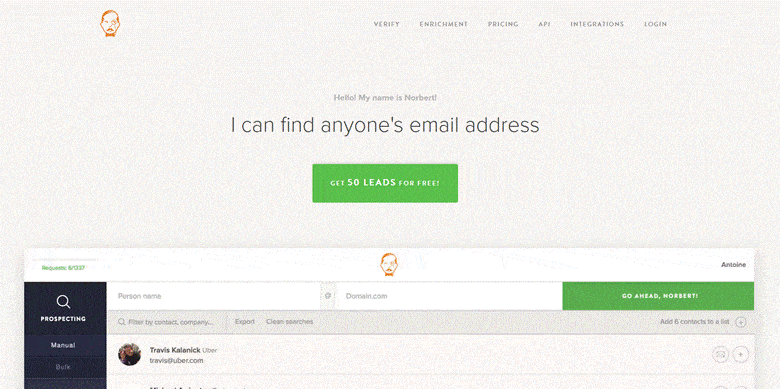
Voila Norbert is an excellent tool for inside sales reps to find practically any email address. Once you’ve identified a company, it helps zero in on their key contacts and makes an initial cold contact so much easier.
As with any lead generation platform, use caution. A first impression is everything. Once you’ve found the right leads and their email addresses, make sure your outreach team is sharp enough to capture their interest.
The first 50 leads are free with Voila Norbert, so depending on how quickly you want to move, their trial period can last quite some time.
If you’re serious about using their lead generation service, prices run from $39 to $499 a month. There’s a prepaid option which we think is pretty cool, too.
Autodialers
Waiting for a ringing phone to be answered isn’t viable anymore. It wastes thousands of hours of your inside sales reps’ time. That’s why we value autodialers.
Besides the convenience, the time-saving potential for inside sales is huge. Here’s our favorite auto-dialing software:
Callhub
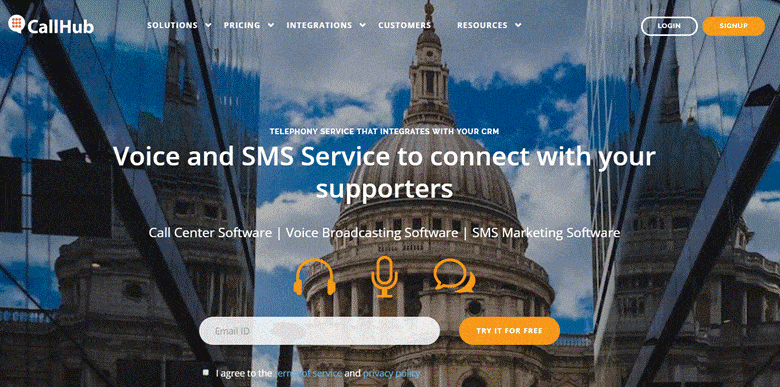
Callhub offers a voice and text service to connect your inside and outside sales reps to your followers. It’s a great way to quickly and easily follow up on leads.
It also integrates with your CRM, so your inside and outside sales reps can schedule calls and texts right there. Many different features are useful in a lead gen environment, like call patching and insightful analytics.
It’s also secure since it has a large client base from the political sphere.
Their pricing options are customizable, so take a look to determine if they’re the right fit for your inside sales.
PhoneBurner
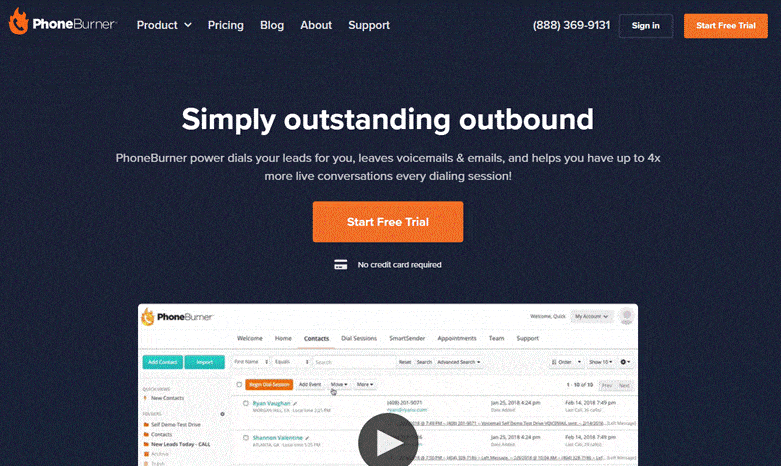
PhoneBurner is another great tool to generate leads for both inside and outside sales reps. In fact, it’s specifically designed to maximize your lead generation.
Besides auto dialing, PhoneBurner has other useful features, like workflow automation and automatic lead distribution. You can also display a local number to the lead you’re calling, so they’ll be more likely to answer.
Pricing starts at $149 for one user and up to $3725 for 50 users. You get to choose your own budget based on the size of your company and the number of inside and outside sales reps you have.
Voicent
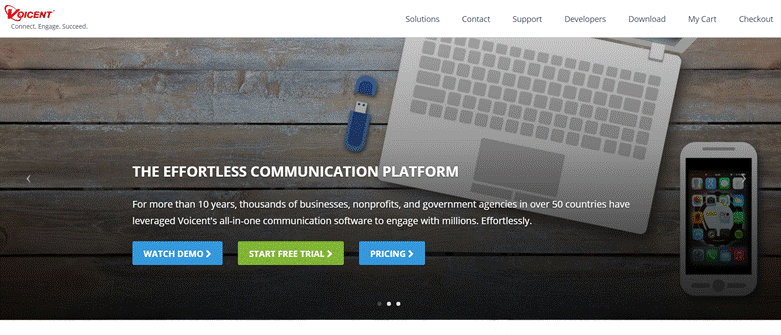
Voicent is an all-in-one kind of platform. They handle your calls, texts, emails, and more.
It’s a fantastic platform and has been in business for over ten years. They’re an option to consider if you’re looking for an all-inclusive solution for both inside and outside sales.
They have online reviews from 3 to 5 stars, so try them out to see if they’re a fit. They do offer a 30-day trial, so the risk is minimal.
CRM’s
You can’t have an efficient sales process without the right CRM. At least, that’s what digital marketers or inside sales reps will tell you.
They’re right.
Your CRM will handle all your prospect communication and data in a perfect world. These tools help inside and outside sales reps instantly connect with your customers and follow up with the right leads.
Here are a few CRMs to do exactly that:
Pipedrive
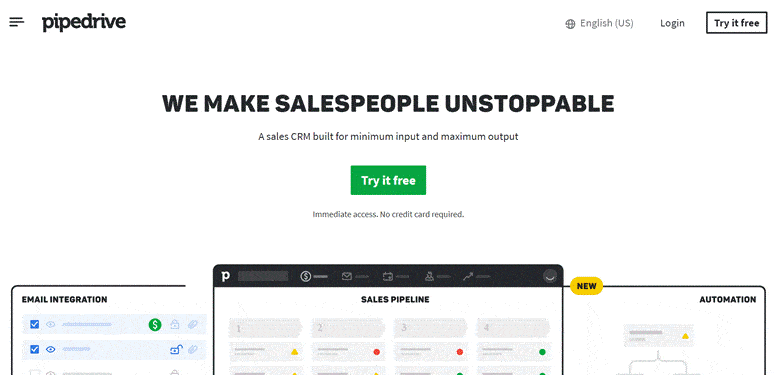
Pipedrive is a popular CRM for sales professionals. Built on the idea of simplicity, their aim is to give you a CRM that requires little input but gives maximum output (it’s right on their header).
The best thing about Pipedrive is the sales process view. At a glance, this gives your entire inside and outside sales process on one page.
They get great reviews and present a solid choice if you’re looking for a CRM or a switch-up.
Pipedrive bills per user will cost you between $12.50 and $49.17 per user per month.
They also offer an immediate-access, credit card-free trial.
Freshsales
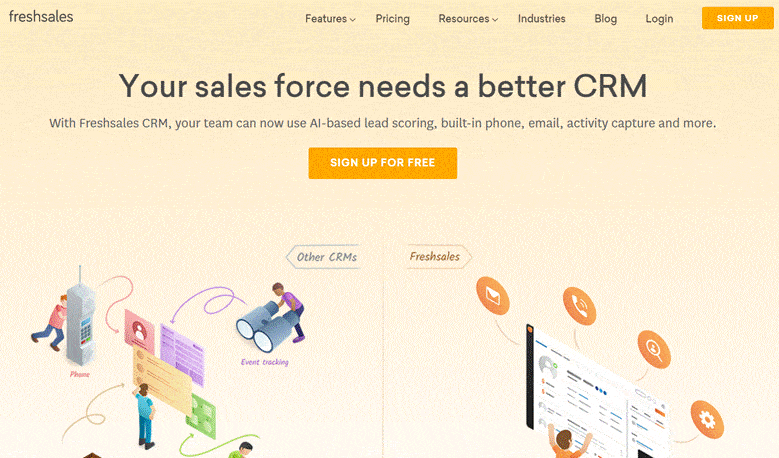
Freshsales is another all-in-one inside and outside sales solution. The usual CRM features include built-in calling and email, lead generation tools, and fantastic analytics.
Instead of having specialized software in each field, you can have one software that does it all.
They also charge per user per month from $12 to $79 per user.
They also offer a 30-day trial to determine whether they’re right for your inside and outside sales needs.
Inside Sales Box
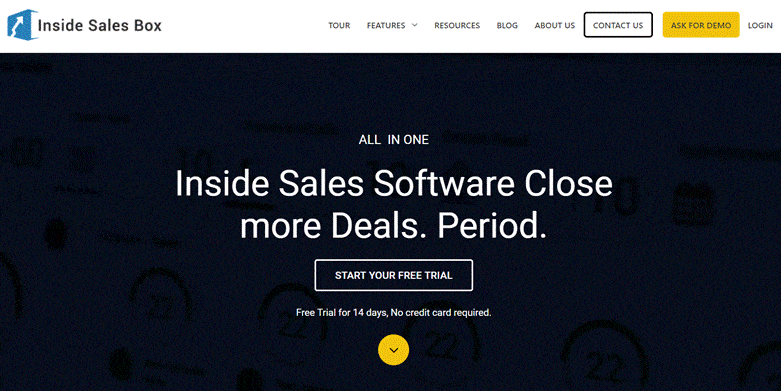
Another all-in-one solution, Inside Sales Box, builds inside and outside sales solutions for sales teams.
They offer built-in dialing, email tracking, lead management, and more for your sales professionals to succeed at their jobs.
Social Selling
LinkedIn is a great tool for inside sales lead gen, but it can take entire days to navigate the myriad available leads and find the right leads for you.
Thankfully, there are tools to make your job simpler:
LinkedIn Sales Navigator
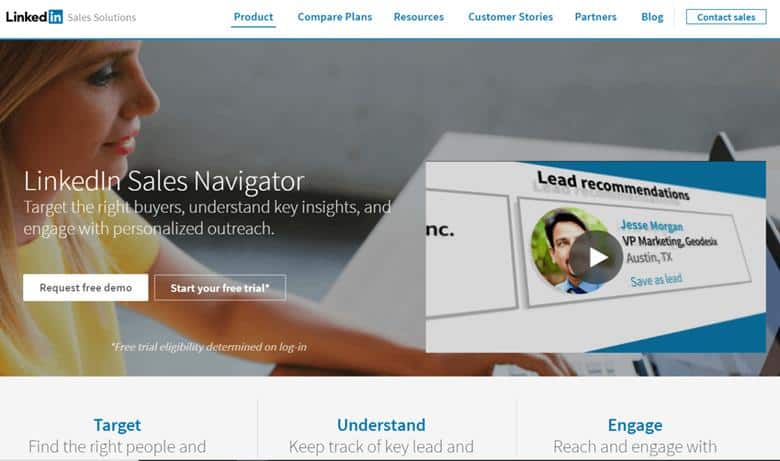
Sales Navigator is a premium tool for LinkedIn, by LinkedIn. It helps your inside sales reps search for pre-qualified leads. There are company size and industry filters, allowing you to narrow your search for only the best leads for your inside sales needs.
It’s free for 30 days. Use it to push lead gen and see whether the tool works for you before paying a cent.
Thereafter, it’s $79.99 per month.
Dux-Soup
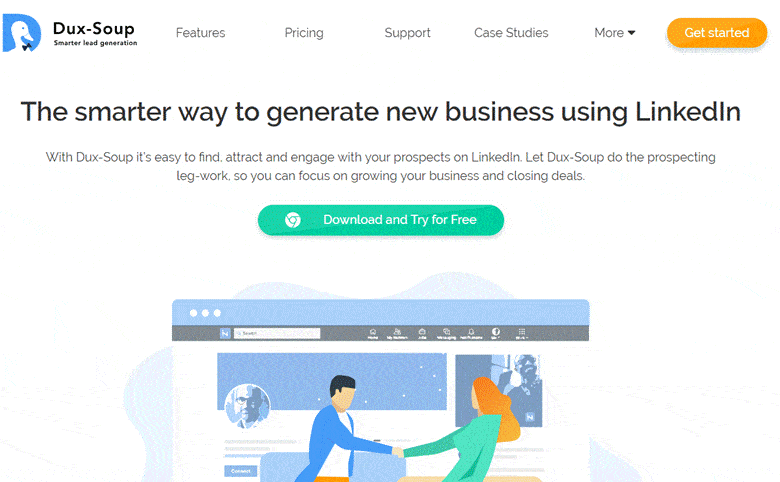
If your process doesn’t make room for manually chasing leads on LinkedIn, Dux-Soup might be for you.
Use it to automatically strike up conversations and start your inside sales efforts with your prospects, engaging only with active prospects.
It eliminates time-wasters and allows your lead gen team to perform at their optimum efficiency.
They have a starter plan which is free – forever. The premium packages are $11.25 or $41.25 per user per month.
LinkedInHelper
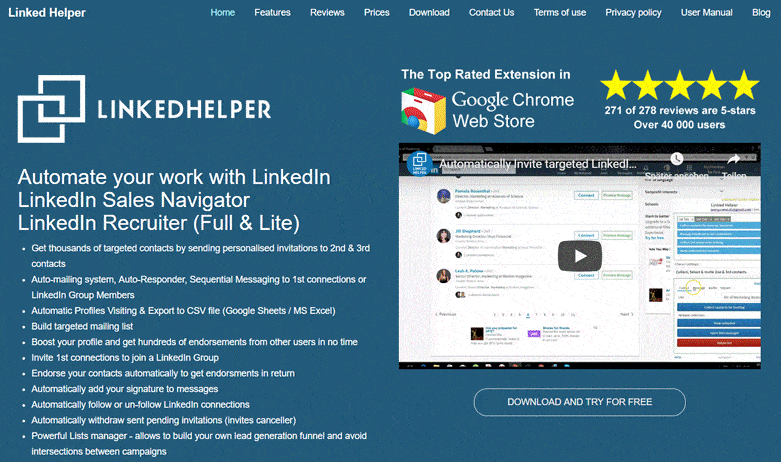
By automatically driving thousands of leads to your door, LinkedIn Helper automates your LInkedIn lead gen for your inside sales reps. Auto-mailing and responding software generate leads for your inside sales without you lifting a finger.
Again, it’s perfect for cutting out time wasted when including inactive leads in your inside sales efforts. You can then focus on the active leads and drive those conversions.
They have a weird pricing system. You “buy” an installation for a set period of time, much like a subscription, but slightly different.
You’ll pay $15 a month and up to $99 for 12 months. You can try it for free before you buy at any time.
3 Unusual Insides Sales Tips to Get Started
If you lack an inside sales model right now but want to explore one, here are a few quick tips to get you started.
The tips you follow will depend largely on your budget and available time.
1. Hire A Copywriter
There are thousands of copywriters out there who specialize in various fields.
If you’re lucky, you can find one or two multi-skilled copywriters to build you a solid funnel or outreach system. Alternatively, get a copywriter to build templates for all your inside sales communications and then have clerk-level employees handle the outreach.
The best copywriters charge thousands per hour. You can find a proficient copywriter on a job board like Upwork or Freelancer.com.
There are groups on Facebook, too – like the Cult of Copy job board, where you can find a wide variety of copywriters ready to help you.
2. Do A Viability Study First
Maybe it would be best for your inside sales to do a market study before spending a ton of money on building an inside sales process.
Hire a researcher or set up surveys on websites like SurveyLegend. The more data you get, your inside and outside sales reps can perform better.
3. Calculate How Much Of Your Current Turnover Is Inside
You might have sales reps already using inside sales. In that case, you may not need external help to put the process into print.
Talk to your inside sales reps and find out exactly how much of your sales is already coming from inside sales. Perhaps, one of your reps can lead your new inside sales process development.
Best Insides Sales Training Courses
There’s nothing like training when you need to acquire a new skill. Either you get a personal sales coach or consultant like Marc Wayshak, or you sign up for one of the online training courses we recommend:
21st Century Sales Training
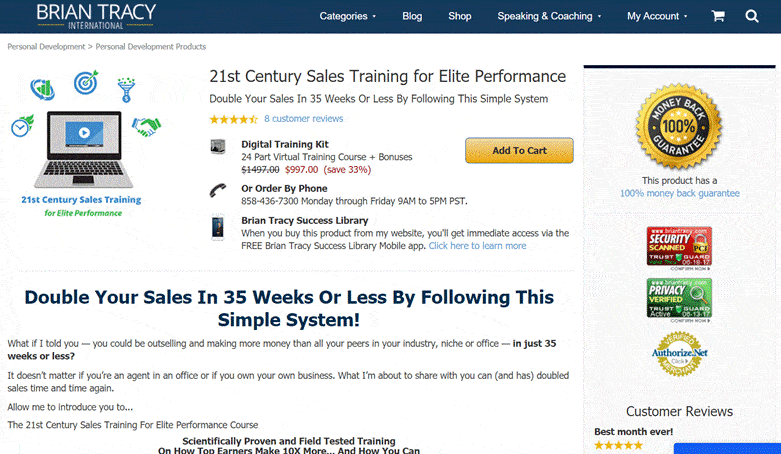
This course covers the bulk of the inside sales process. Backed by years of testing, it’s highly recommended for anyone in the sales industry.
At $997, it’s quite pricey, but as an investment in your future, it’s reasonable. This is especially true if you want to educate inside and outside sales reps and develop an effective inside sales model.
Inside Sales Consulting And Training
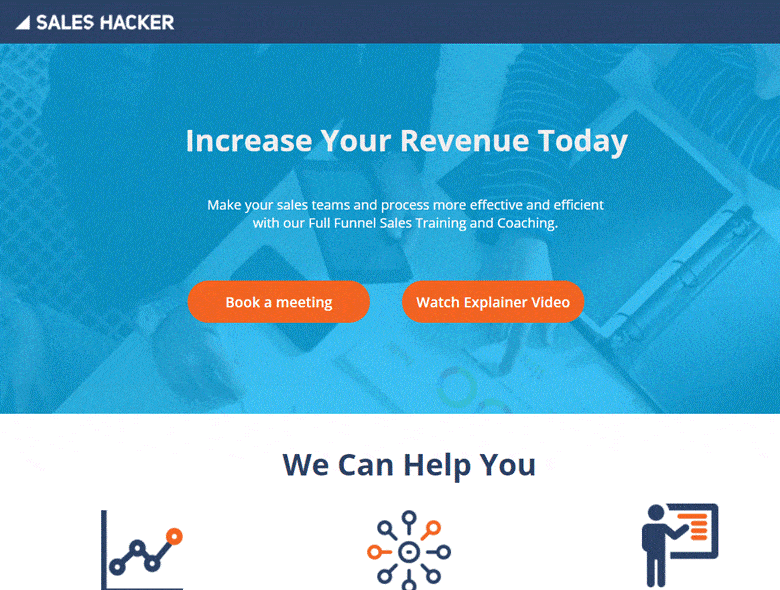
Sales Hacker gives your inside sales reps a longer-term training solution with consistent consulting and training.
An excellent option to keep both inside and outside sales reps properly trained.
The Art Of Sales: Mastering The Selling Process
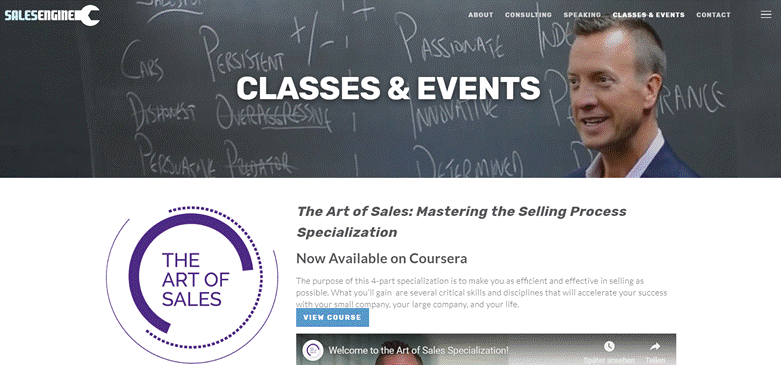
This is another accessible course for understanding the processes you will need to implement for a kick-ass inside sales strategy.
The course is mostly for beginner inside and outside sales reps. But old hands in marketing will know that no matter the course level, there’s always something new to learn. It’s a great choice for everybody.
Hubspot’s Inbound Sales Certification Sales
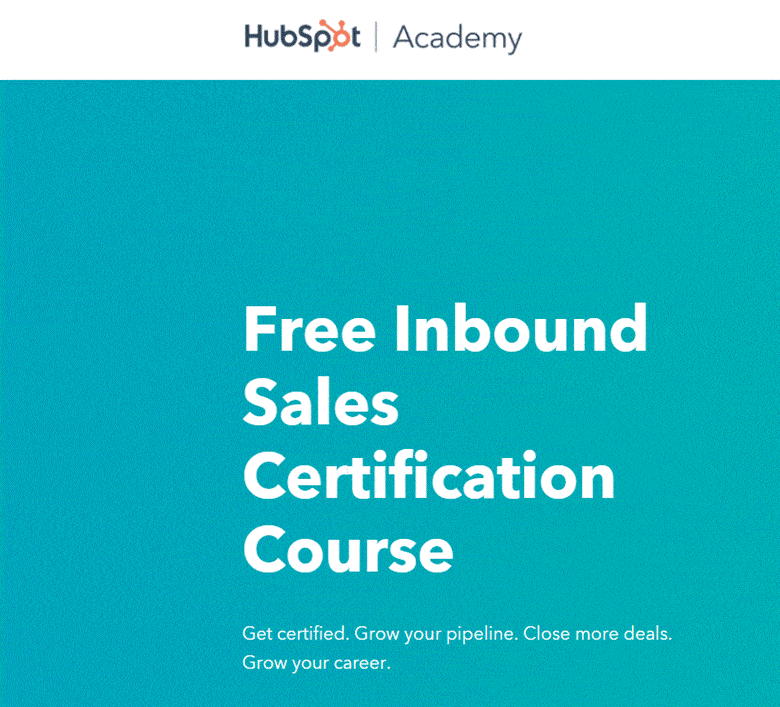
Hubspot’s inbound sales course is also a good option if your inside sales reps are a bit light on material.
It’s free, so if your inside sales training is on a tight budget, this one is definitely for you!
Bespoke
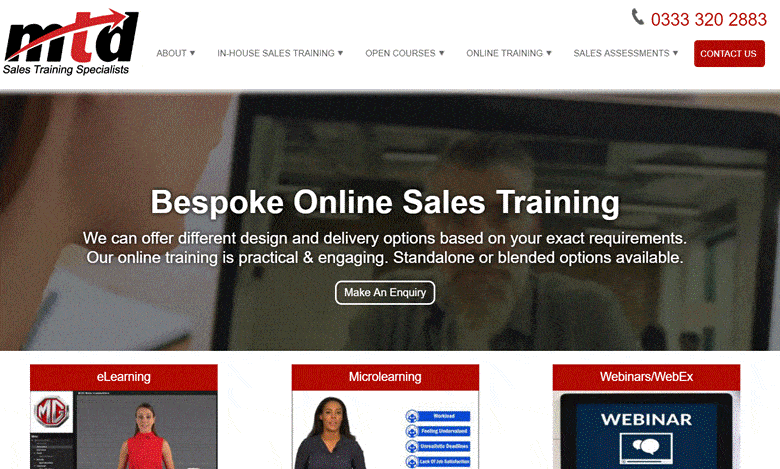
Bespoke is the place to attain top-level marketing training. Online courses and in-house training are available and can cater to almost any budget. They have good inside sales courses for any sales team to learn from.
Best Inside Sales Blogs You Should Follow
Follow these sales blogs for more about how inside sales can benefit you:
Sales Hacker
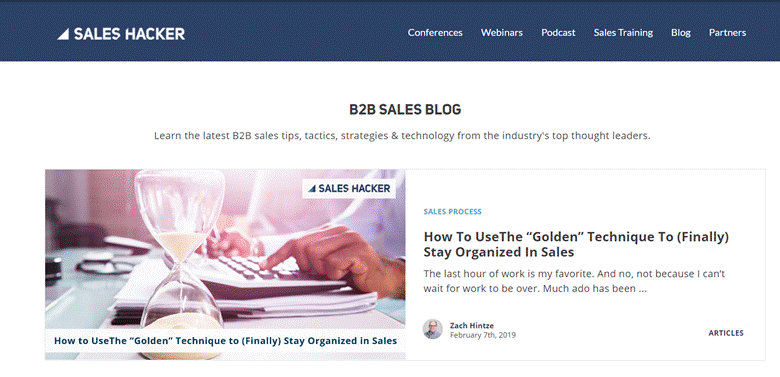
Sales hacker’s courses are good, and so is their blog. There’s a wide variety of posts on all things B2B. It is a chance to gain new insights into the world of B2B marketing.
In the context of inside sales, a great post by Sales Hacker is this one, which explains how smart email signatures can land you more business.
HubSpot Sales Blog

Hubspot has been a powerhouse in inside sales and digital marketing for years. Their blog covers a far wider audience. If you’d like to read up about things that future CEOs need to know or see elevator pitch examples.
It is an amazing blog for all things marketing, so encourage your inside sales professionals to keep up with it.
Speaking of elevator pitches, here are 6 examples from Hubspot’s blog that could make your next pitch even better.
RingDNA

RingDNA’s blog is primarily focused on inside sales. Exploring their blog in-depth might be a good idea if your sales teams are new to the game.
Earlier in this post, we spoke about the role of the human touch in sales. If you’d like to dive into RingDNA’s blog, here’s a great article on when to apply that human touch and when to automate.
Insidesales.com Blog
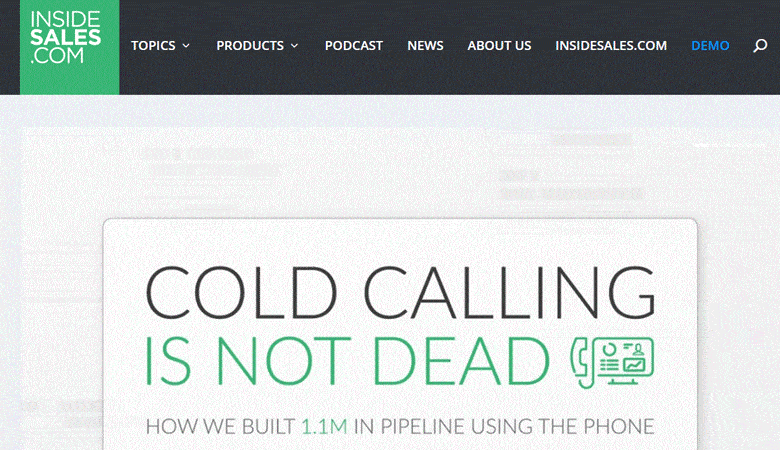
Another great place to start learning about inside sales is insidesales.com’s blog. They’re focused on inside sales and have a lot of superb posts.
A good place to start would be this post. It gives you 8 things you need to know when responding to your inbound leads.
Inside Sales Experts Blog

The Bridge Group hosts an inside sales experts’ blog. It features an impressive variety of content, including case studies on inside sales techniques that are working for other companies.
If you’re about to build your own inside sales team, this blog post – focused on recruitment – could be the best place to start.
What Will Your Inside Sales Process Make You?
Now you know how to build your own inside sales process and team.
Inside sales are clearly the future as we move further away from human contact and towards technology. In fact, LinkedIn’s 2016 sales report states that traditional reps already spend almost 25% of their time on inside sales techniques.
We can realistically expect that number to double in the next decade.
So… what has your experience been with inside sales? Did this blog help you out? Let us know in the comments below.+








